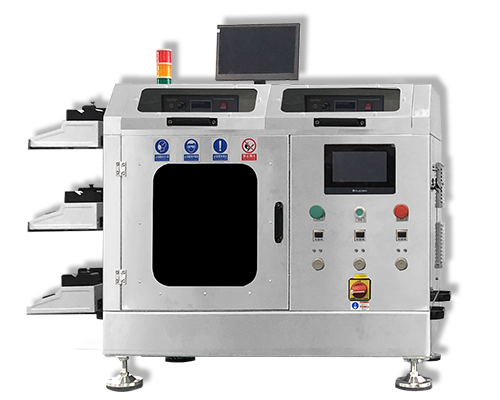Heart Valve Device
Heart Valve Device – Preparation of Film Coatings For Heart Valves – Cheersonic
There are four heart valves in the human body, namely the mitral valve, tricuspid valve, aortic valve and pulmonary valve. The mitral and tricuspid valves control blood flow between the chambers of the heart, the aortic valve controls blood flow from the blood to various organs throughout the body, and the pulmonary valve controls blood flow from the heart to the lungs. These four heart valves are equivalent to the “valve” of the heart and open in one direction to ensure that the blood flows in one direction from the right atrium-right ventricle-pulmonary artery and left atrium-left ventricle-aorta. Small valves play an indispensable role in the heart’s never-ending blood circulation.
Device composition
Aortic valve interventional valve: Aortic valve interventional valve is the core device of transcatheter aortic valve replacement (TAVR), generally composed of a stent, pericardium, and skirt, and is used to treat aortic stenosis (AS). The interventional valve is equivalent to a “large stent” + biological valve. The “large stent” mainly plays the role of fixation and support, and the biological valve is sewn on it to control the entry and exit of blood flow. According to the opening method, it can be divided into balloon-expandable interventional valves, self-expanding (self-expanding) interventional valves, and mechanically expandable valves. The former two are currently the most widely used. The balloon-expandable interventional valve is first mechanically compressed on the delivery system outside the body, and after being sent to the predetermined position, a high-pressure non-compliant balloon is used to stretch and fix it. The main material of the self-expanding interventional valve stent is memory alloy. It is different from the working principle of the balloon expansion type. The self-expanding stent will shrink to the diameter of the artery at low temperature, and it will be released when the blood is heated to the temperature of the human body. This makes the radial support force of the self-expandable interventional valve generally smaller than that of the balloon-expandable interventional valve, so the length of the stent of the self-expandable interventional valve is mostly longer than that of the balloon-expandable interventional valve. Aortic valve replacement is the recommended treatment for acquired valve diseases. As a new minimally invasive treatment, TAVR has become a hot spot in the field of aortic valve replacement due to its high safety and gradually expanding indications.
2) Mitral valve interventional therapy device: Transcatheter mitral valve clip is a representative device of transcatheter edge-to-edge mitral valve repair (TEER), and TEER is a kind of transcatheter mitral valve repair (TMVR). For the treatment of mitral regurgitation (MR). The overall system includes two parts: mitral valve clip, delivery catheter, and steerable guide catheter (dilator). Wherein, the mitral valve clip and delivery catheter include three main components: delivery catheter, twistable sleeve and mitral valve clip. MR accounts for 65% of all mitral valve diseases. Due to the complex structural features of the mitral valve, currently only TEER devices are recommended by the guidelines.
3) Tricuspid valve interventional therapy device: Tricuspid valve interventional therapy device can be divided into interventional shaping device, heterotopic replacement device and in situ replacement device according to the principle of action, used to treat tricuspid regurgitation (TR), interventional shaping device development is more extensive. According to the principle of action, interventional shaping devices can be divided into three types: constriction, leaflet apposition and anti-reflux. TR accounts for 60% of all tricuspid valve diseases. Surgical tricuspid valve surgery has a high risk of death in the hospital. Transcatheter tricuspid valve therapy has become a popular direction that is most likely to meet clinical needs, but most of the products have not been approved for marketing.
Ultrasonic spraying is uniquely suited for many medical coating applications due to its fine, non-clogging, repeatable spray performance and very low flow rate capability. For several years, Cheersonic has been providing ultrasonic spraying equipment for global medical equipment manufacturers. With the development of medical device technology, we will continue to design unique ultrasonic spraying solutions for medical coatings and provide high-quality medical device coatings on the market.
Cheersonic provides a variety of ultrasonic coating equipment and solutions for manufacturing industry of implantable, in interventional medical devices, the drug-eluting stents and balloon catheters. Our ultrasonic coating systems have been used to spray anti-restenosis drug eluting polymer solutions onto implantable stents. Compared to conventional two-fluid nozzles, ultrasonic nozzles can spray a more uniform drug coating that completely covers the stent without the orange peel and adhesion to a complex stent. And the coatings are much thinner than can be achieved with dip coating, saving spray material.
- Ideal for R&D and low-volume production
- Compact desktop design that is easy to move
- The material usage ratio > 95%
- Reliable, repeatable and consistent coating, uniformity of ±5%
- Max. length 100mm, max. diameter 60mm
About Cheersonic
Cheersonic is the leading developer and manufacturer of ultrasonic coating systems for applying precise, thin film coatings to protect, strengthen or smooth surfaces on parts and components for the microelectronics/electronics, alternative energy, medical and industrial markets, including specialized glass applications in construction and automotive.
Our coating solutions are environmentally-friendly, efficient and highly reliable, and enable dramatic reductions in overspray, savings in raw material, water and energy usage and provide improved process repeatability, transfer efficiency, high uniformity and reduced emissions.
Chinese Website: Cheersonic Provides Professional Coating Solutions


